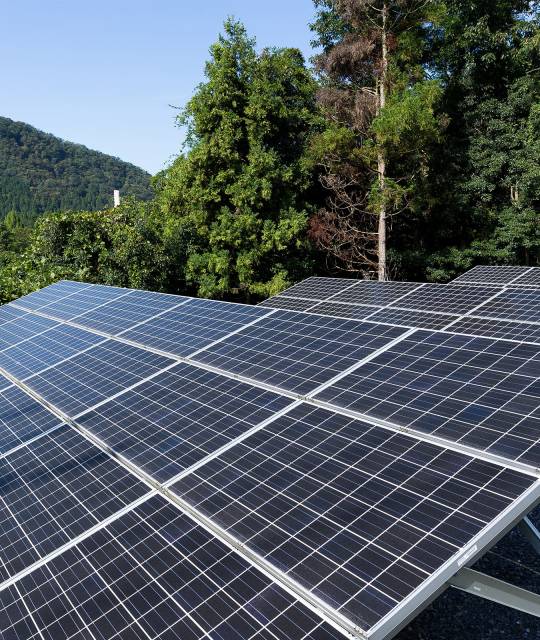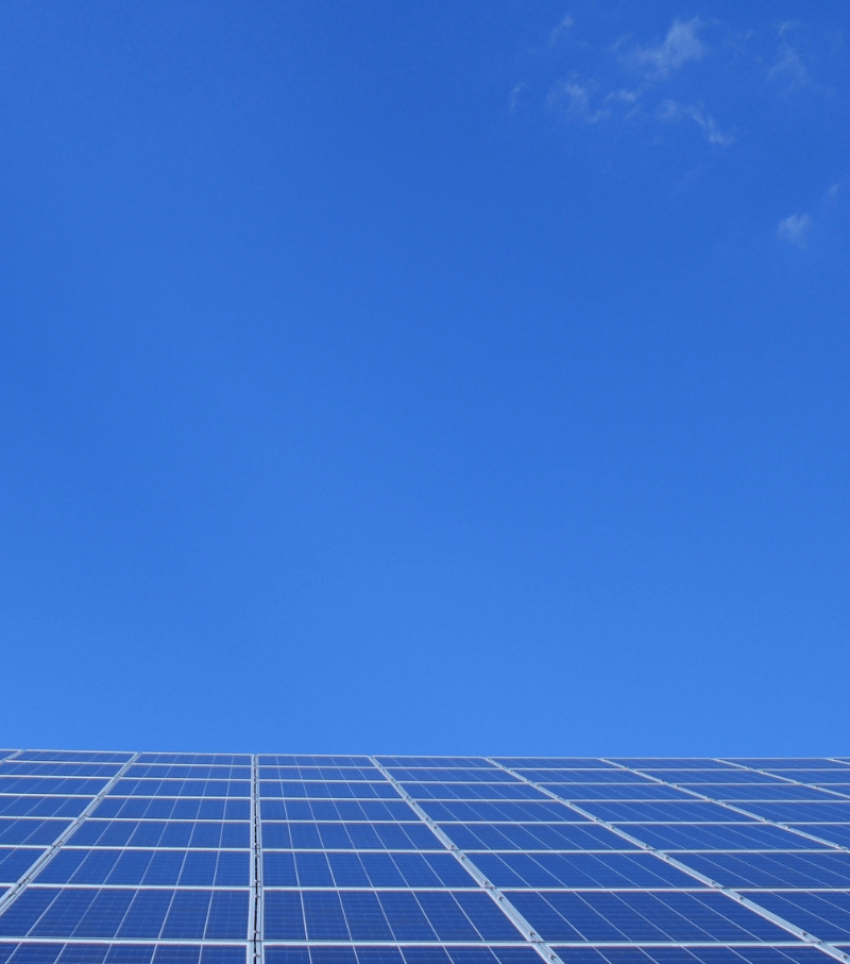Benefits of Solar
About Solar PV
Solar Photovoltaeic (PV) panels generate electricity during daylight hours.
The amount of electricity produced depends on how bright the day is, so most energy is produced on long sunny summer days, and least in short dark winter days.
The energy from the solar modules feeds to a controller (inverter) which then feeds to the fuse board.
The solar energy fed into the fuse board has priority over the grid, so that it first powers current electricity needs of the premises.
In this way, Solar PV reduces the amount of electricity imported from the grid, thus saving on your electricity bills.



How is the Power Used?
There are three possible things that happen to the solar electricity as it is generated:
- It is consumed instantly by electric appliance(s) or any electric load in the household.
- If the solar electricity generated is more than the load, then the excess overspills back to the grid. If it is less, the grid automatically makes up the short fall.
- Alternatively, the excess can be diverted to a storage battery for reuse later in the evening or diverted to heating water in a hot press tank via the immersion.
Installing Solar PV
Solar panels are generally installed on roofs facing in a southerly direction between east and west – they can also be ground mounted on a frame or purposed built structure, such as a pergola or carport. Ground mounted systems will nearly always always be entirely south faced to take advantage of maximum energy from the sun.
Ideally, the site should not be heavily shaded from neighbouring buildings or high trees casting a shadow on the roof for a significant portion of the day. For example, a chimney or tall tree casting a moving shadow on a string of modules as the sun tracks across the sky will impact the total output of the string because as each individual module is being shaded it will negatively impact the whole string. Installing optimizers on potentially affected modules will protect the complete string against energy yield loss.
It’s a different matter if the whole string is permanently shaded all day long by for example a tall building to the south. Then optimizers can’t help here, and modules should not be installed. For this reason, modules are never installed on north facing roofs in Ireland – being in the northern hemisphere. If the roof pitch is low e.g., less than say 20⁰ then aspects (azimuths) marginally north of east and west can be considered.
Planning permission is no longer required for Solar PV systems for domestic or smaller scale commercial projects.
Depending on needs and space available, average size systems have at least 8 to 10 modules nowadays. Owing to fixed installation costs we would largey never recommend installing less than 6 panels and typically a good size system to meet most household needs will range from 12 to 20 panels.
Solar Cost Estimates in Ireland
- The cost of a small system without a battery or hot water diversion system (EDDI) starts at about €5,000 and can run right up to €18,000 for a large 22+ module system with 10kWh battery storage
- For Home installations, SEAI grant refunds are available up to a maximum of €2,100, and are included in the above estimates.
- All energy suppliers are now paying a feed in tariff (FIT) for the excess spilled back to the grid. Offers vary from typically €0.16 to €0.24 depending on supplier. A smart meter must be installed to record the exact amount of energy exported.


Benefits
- A solar PV system can save up to 75% of your energy costs and pay for itself in 4 to 8 years depending on system selected.
- Solar PV saves on your carbon emissions as the energy is completely green and renewable (every unit of energy fed in from the grid, has about 0.4kg of carbon associated with it).
- Solar modules have a minimum service life of 25 years and a product warranty largely of 15 to 30 years depending on manufacturer
- Solar modules are self-cleaning and largely require no maintenance (some exceptions such as heavy bird fouling or a dust storm may require a professional cleaning)

